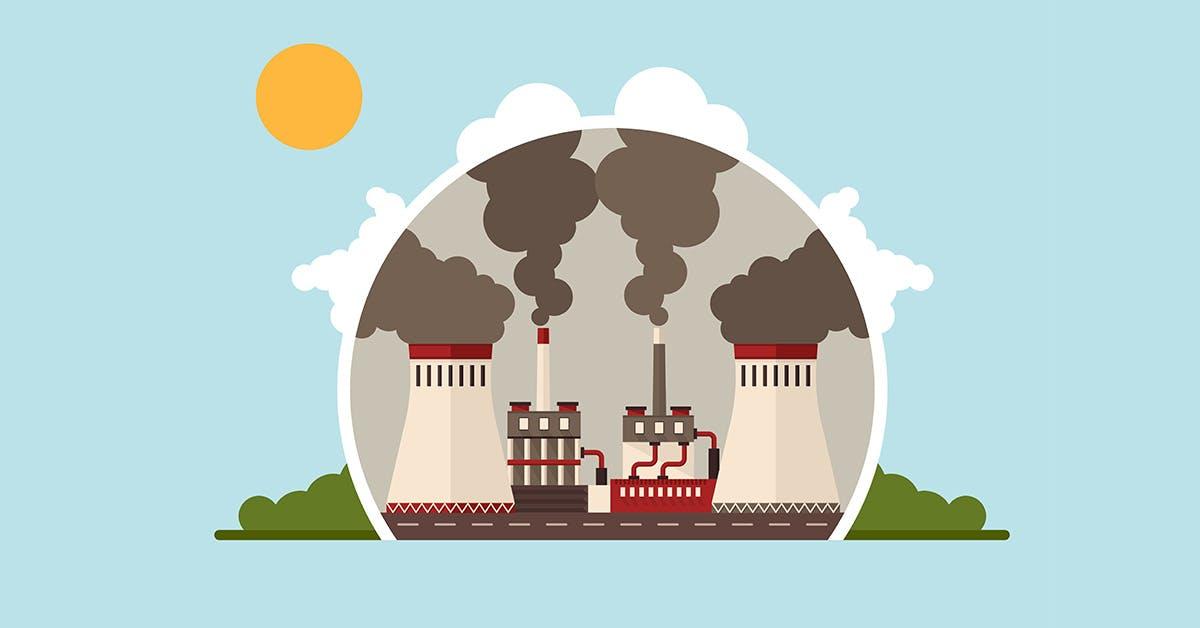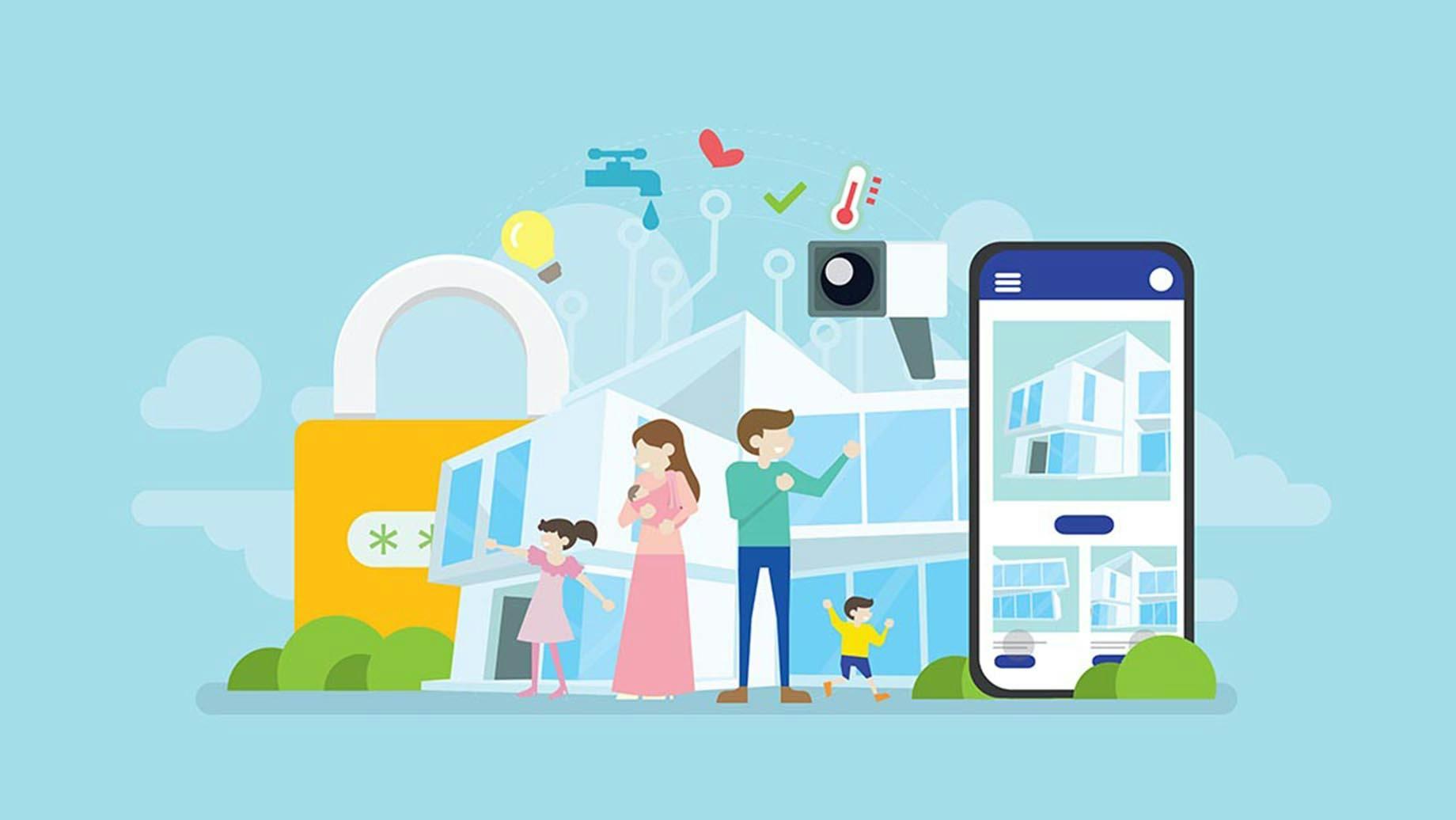
What is Environmental Sustainability: Definition & Examples
Inspire Clean Energy
16 min read
category: Sustainable Living
Don't worry about climate change— do something about it.
Our clean energy plans are the easiest way to reduce your home's carbon footprint.
Switch to clean energyThe Importance of Environmental Sustainability
When we’re feeling stressed or out of touch, many of us instinctively go for walks. We search for forests, parks, beaches, and country roads to feel more at peace connected to nature. Given that fact, it’s no surprise that human well-being is intrinsically linked to the health of the environment. About 24% of global human deaths are caused—directly or indirectly—by avoidable environmental factors. To live long and healthy lives, we need and deserve unpolluted air to breathe, clean water to drink, and to live in places free of toxic substances.
As the global population grows and we begin to experience the long-term consequences of excessive energy use and industrial growth, we must prevent further damage. It is our job to ensure our future generations have healthy places to live and minimize our damage to the earth’s biodiverse ecosystems. For businesses, sustainability means running a business through sustainable practices and securing future growth potential without causing too much damage to the environment.
What is environmental sustainability?
According to the U.N. Environment Programme, environmental sustainability involves making life choices that ensure an equal, if not better, way of life for future generations.
Environmental sustainability aims to improve the quality of human life without putting unnecessary strain on the earth's supporting ecosystems. It’s about creating an equilibrium between consumerist human culture and the living world. We can do this by living in a way that doesn’t waste or unnecessarily deplete natural resources.
Why is sustainability important?
Environmental sustainability is important because of how much energy, food, and human-made resources we use every day. Rapid population growth has resulted in increased farming and manufacturing, leading to more greenhouse gas emissions, unsustainable energy use, and deforestation.
In other words, we need more energy and materials than ever before. Despite this, our planet can only provide so many resources before they begin to deplete. For this reason, businesses must step in and do their part. They have more power than any group of individuals, and they can help secure a livable future by investing in sustainable and responsible practices like reducing waste, using commercial clean energy, and paying fair wages.
What is a simple definition of environmental sustainability?
In simple terms, environmental sustainability is the practice of interacting with the planet responsibly. We do it to avoid depleting natural resources and compromising the future generation’s ability to meet their daily needs.
What are some examples of environmental sustainability?
There are two primary ways in which environmental sustainability can be achieved: by individuals and by corporations and government bodies.
As individuals, we can take small but effective steps toward a more sustainable lifestyle, like using less water, reducing our meat consumption, and switching to reusable products to reduce our dependence on single-use plastics.
From a corporation’s perspective, environmental sustainability may involve switching to renewable energy in warehouses, factories, and offices or cutting down on single-use plastics in manufacturing.
What are the three pillars of sustainability?
Aside from benefiting the planet and its inhabitants, environmental sustainability offers plenty of benefits. The three pillars of sustainability involve economic, social, and environmental development.
- Economic sustainability is the responsibility of businesses and communities. Here, they are encouraged to use their resources responsibly and efficiently. Economic sustainability is designed to support long-term economic growth without harming the environmental, social, and cultural aspects of our global community.
- Social sustainability benefits people. Living sustainably as individuals, families, communities, and countries means healthier air and less money needlessly spent on healthcare. Using renewable energy sources can reduce droughts, as they require less water and energy to maintain. The eventual goal is that sustainable development will also reduce hunger and poverty, and generally provide a better global quality of life, promoting fairly distributed education and healthcare.
- Environmental sustainability focuses on the state of the planet. It encourages individuals to live in a way that creates minimal waste and even regenerates some of the resources we use every day.
Why do we need sustainability?
The general goal of environmental sustainability is to evens things out. As we’ve seen, environmental sustainability provides huge benefits for human health and that of all other species. It reduces our global carbon footprint and reduces our reliance on fossil fuels and other harmful energy practices. But does it benefit us in other ways?
Sustainability can increase life expectancy by providing healthier living conditions and better healthcare, which could also lessen the divide between the rich and poor. Sustainable development encourages more responsible manufacturing and production, covering the industrial side of waste and pollution. It also encourages companies, industries, and governments to make decisions based on long-term consequences, rather than taking the easiest, cheapest option.
What are the issues of environmental sustainability?
While environmental sustainability offers clear benefits in terms of global human and animal health, there are some barriers we may face when working to achieve it.
- Exponential population growth, unsustainable consumption, and production patterns among the rich are the primary social challenges to achieving global sustainable development. Unless we see a significant change in global human behavior, sustainability will not be possible. Other social hurdles include limited awareness and education about sustainability, insufficient interaction between civil society and the government, and inadequate incentives for the private sector to encourage sustainable development.
- Economists have observed that sustainable development focuses on economic growth rather than people's health or rights. For environmental sustainability to work globally, our worldview must shift, as we currently treat the environment as part of the economy rather than the other way around. This change means the economy must be adapted so that environmental services are maintained. This process is easier said than done, and it will likely take decades for a shift to begin taking place.
We may face some obstacles in our efforts to achieve environmental sustainability, but that does not mean we shouldn’t do our best. The idea of living sustainably can feel daunting, but there are plenty of small changes we can make without much inconvenience.
What are the benefits of environmental sustainability?
The benefits of environmental sustainability are:
- We can protect ecosystems
- We can continue to enjoy nature as it is
- We can protect endangered species
- Less pollution in the cities results in better respiratory health for all
- It could halt or reverse the effects of global warming
- We won’t be creating huge landfills all over the world that will take hundreds of years to break down
For businesses, the benefits are:
- You reduce your energy usage and thus save money
- You produce less waste, which can help you save money and will make you a better choice for eco-conscious customers
- You can position yourself as a preferred option for environmentally conscious customers by reducing your pollution output, which can also qualify you for incentives and cost savings in certain areas
- Improve your brand image
- Attract and keep better-quality investors, employees, and shareholders
- You can rest easy at night knowing you’re not damaging the planet for future generations
How do you achieve environmental sustainability?
Here are some easy ways you can live more sustainably in your daily life:
- Cut down on red meat; it’s a huge driver of food air miles and methane emissions.
- Switch to a green energy utility company—resources like wind, solar power, and geothermal energy are all infinite sources and will not deplete. Switching to a green energy company is one of the simplest and most effective ways to make a difference.
- Cook and bake your own meals and snacks, rather than relying on food in plastic and non-recyclable packaging. Cooking in batches is another great way to use less energy and reduce waste.
- Ditch bottled water and drink from the tap. Plastic bottles take about 450 years to decompose, so consider if it’s worth it for the sake of one drink. Instead, opt for a reusable water bottle or a water filter jug for your refrigerator.
- Rely less on your car and walk or cycle when possible.
- Replace incandescent light bulbs with more energy-efficient bulbs.
- Eat locally—this supports food products with low air miles. In other words, try to eat foods that haven’t traveled far to make it onto your plate.
- Resell, repurpose, or donate unwanted items. Repurposing may mean using old clothes or bed sheets for cleaning rags or reusing glass jars to store dry foods.
- Replace saran wrap with reusable beeswax eco-wraps.
- Say no to the plastic straw with your iced coffee—bring your own instead!
- If you wear make-up, switch to washable, reusable make-up wipes, and plastic-free cosmetics.
- Reduce your consumption of single-use plastic materials like water bottles, grocery bags, coffee cups, and produce wrapping. You can replace these single-use items with tote bags, water flasks, reusable coffee cups, and plastic-free fruit and vegetables.
- Switch out paper towels for reusable dishcloths.
- Instead of buying expensive, heavily packaged body scrubs, make one using coffee grounds, sugar, and a little coconut oil.
- Buy a bamboo toothbrush or an electric toothbrush instead of using plastic ones.
Achieve environmental sustainability by switching to renewable energy
Fossil fuels are one of the most harmful elements of our energy use today, but you can choose a safer, more sustainable option.
With Inspire, we believe in a world where clean energy is available to everyone, and we want to help make that future a reality today. By switching to Inspire, you’ll help to put more clean, sustainable energy on the grid and drive down the demand for fossil fuels.
Whether you’re an individual or a business, we’re here to help you reduce your carbon footprint. Click here to make the switch today.
At Inspire Clean Energy, we are a renewable energy company passionate about empowering our customers to do the right thing for the environment, themselves, and their families. We want to make it easy and affordable to choose clean energy.
Not sure if renewable energy is right for you? Read the latest Inspire Clean Energy reviews to see how we've helped customers make the switch.
What does environmental protection mean?
Environmental protection includes initiatives to mitigate environmental risks posed by contaminants such as toxic materials, wastes, fuels, and oils. By establishing processes for properly working with these materials, evaluating storage vessels and locations, and establishing preventative maintenance procedures, these programs address pollution prevention and regulatory compliance.
Essentially, environmental protection includes any agency that seeks to benefit humans, the environment, and the planet. The biophysical environment is being destroyed, sometimes permanently, due to the pressures of overconsumption, population, and technology. This has been recognized, and governments have begun to impose restrictions on activities that degrade the environment.
Another facet of environmental protection is recycling by converting waste into usable products. Any protection set in place to maintain the health of our greatest resource—Earth—serves to protect every plant, animal, and human. Environmental emergency plans are also included, which outline the steps to take in the case of a spill or discharge.
Why is environmental protection important?
Humans only have one option for planets to live on; we need to offer the proper respect and care for Earth as we do for ourselves. Not only can environmental protections provide us with a better life by preserving finite resources but also our children and future generations. Without the proper reverence for the Earth, we may run out of necessary natural sources that afford us the comforts of life to which we’ve become accustomed.
Additionally, environmental protections save lives by reducing world hunger, global warming, natural disasters, polluted water and soil, and pesticides. In the process, efforts can reduce animal extinction while also protecting animal welfare. Their lives depend on the ecosystems in which they live.
Lastly, protections can allow fields to lie fallow long enough to replenish nutrients. Less contamination of groundwater would also add vitamins and minerals to food. With fewer areas overrun by people, the planet can do its job properly and provide vegetation that improves food and air quality.
What is economic sustainability?
Economic sustainability refers to policies that promote long-term economic growth while minimizing negative effects on the community's social, environmental, and cultural components. Some actions that damage the earth include burning fossil fuels, causing food waste, leveraging damaging manufacturing methods, and contributing to climate change. Sustainable options allow for better business practices that are less harmful to the environment.
In addition, economic sustainability comprises financial costs and benefits and aims to support society and its well-being.
An ideal, sustainable economy achieves the greatest level of general well-being while using the fewest resources and causing the least amount of environmental harm. To be fully sustainable economically, the overall demand for natural resources must be smaller than the renewable supply of resources available in nature.
Businesses cannot rely on exponential population expansion and hazardous environmental practices to sustain economic growth; this thinking is already causing a disaster in our world. To ever achieve environmental sustainability, we must adopt a new way of doing business that promotes the health of the environment and people.
Why is economic sustainability important?
First and foremost, we should all be familiar with the environment. All living creatures exist within their own favored zones of the environment; hence, it is difficult to ignore our impact on the planet. Although the environment can persist in its natural condition, human involvement has wreaked havoc on many ecosystems. Therefore, it is critical that we safeguard our environment to continue to live on this planet in a healthy and secure environment.
What is social equity in sustainability?
Social equity is the fair treatment and participation of all individuals and communities in establishing, implementing, and enforcing environmental laws, regulations, and policies, regardless of race, gender, country of origin, or income level. Uneven distribution of resources such as clean air, water, housing, and public space are addressed through social equity. The higher risk of storm damage for specific populations is a social equity concern. Furthermore, social equity concerns the exclusion of people or groups from full involvement in climate adaptation decisions depending on their income, neighborhood, or social standing.
Why is equity important to sustainability?
The ability of a community to deal with climate-related events and disasters is influenced by both environmental circumstances and economic opportunities. With equity, local groups can promote awareness and support grassroots activities in places where marginalized groups are at risk from storms, flooding, or other climate-related catastrophes by campaigning for improvements across various topics.
Another aspect of equity is the democracy factor, meaning each person has the same power to influence the decisions made by their government and, as a result, has equal access to the resources needed to engage in the political process and make informed decisions. As communities develop and evolve, some residents' voices may be ignored, and their requests may go unfulfilled.
For example, unless measures are taken to offset the consequences of limiting the housing supply or increasing land costs, managed growth might raise home prices. In addition, lower-income and minority communities have been proven to be disproportionately exposed to pollution and environmental risks.
Minorities, people with disabilities, elders, and other underprivileged inhabitants make up marginalized communities, often linked by financial difficulties. Getting these groups involved and including a larger section of your community will increase the number of individuals contributing to sustainability goals like growing green job employment and reducing greenhouse gas emissions and energy consumption.
How is sustainability being measured?
Several factors are considered when measuring sustainability, such as environmental, social, and economic. Please keep in mind that the term "sustainable" refers to the company's environmental impact and its economic and social implications. Some sustainable indicators are not easily measurable in the short term; however, businesses need to look at five main indicators.
The first factor focuses on conformity, or respecting sustainable rules internationally. Second, materials and their performance require measurement to reduce waste and emissions. Third, the effects the company has on the environment need attention.
Next, and possibly the most important, is the supply chain and the product lifecycle. This metric emphasizes the business features that are unique to the company. It is critical to consider the entire product lifecycle, from raw material selection to final disposal, when describing a company as "sustainable." As a result, it's critical to know whether the suppliers use renewable energy sources and the quantity of CO2 produced by transporting the products, and whether they can be recycled or reused.
Finally, the last indicator centers on the sustainable system implemented in the company. This metric depicts how the organization behaves in a social setting. It assesses national and international ties and their impact on the local environment. This metric also depicts the impact on the employees' and community's quality of life.
By analyzing these sustainability indicators, we may establish a critical perspective of our company's sustainability and identify areas that need improvement to achieve a good balance of sustainability actions in terms of social, environmental, and economic factors.
What is sustainable reporting?
A sustainability report is the primary instrument an organization or company can use to proactively share its environmental, social, and governance (ESG) performance and impact—both positive and negative. Stakeholders should be able to understand the material in the report. Furthermore, a sustainability report's major objective is to provide transparency on a company's contribution to sustainable development; it's also used to hold stakeholders accountable.
Why are sustainability standards and certifications important?
Building and maintaining trust in businesses and governments is essential for a prosperous world and a sustainable global economy. This is because businesses and governments make decisions every day that directly impact their stakeholders, such as those involving financial institutions, labor organizations, civil society, and citizens.
These judgments are rarely made only based on financial data, and they frequently take into account risks and opportunities related to several immediate and long-term considerations. These decision-making processes are increasingly incorporating sustainability issues.
A sustainable report must build and communicate the links between sustainability and the business by regularly accumulating and updating the information. The report aids in the improvement of organizational management by recognizing risks, identifying energy-saving opportunities, avoiding compliance concerns, and so on. In addition, it improves internal communication and fosters a sense of belonging among employees.
Next, the report can help improve the organization's image and reputation by demonstrating its commitment to sustainable development through a variety of sustainable services and its social and environmental contributions. Because the report is based on internal consensus, it is a credible source of information available on a regular basis.
Don't worry about climate change— do something about it.
Our clean energy plans are the easiest way to reduce your home's carbon footprint.
Switch to clean energy
Inspire Clean Energy
We're on a mission to transform the way people access clean energy and accelerate a net-zero carbon future.
Learn more about Inspire →Explore more
Recent Posts
Top Articles





















